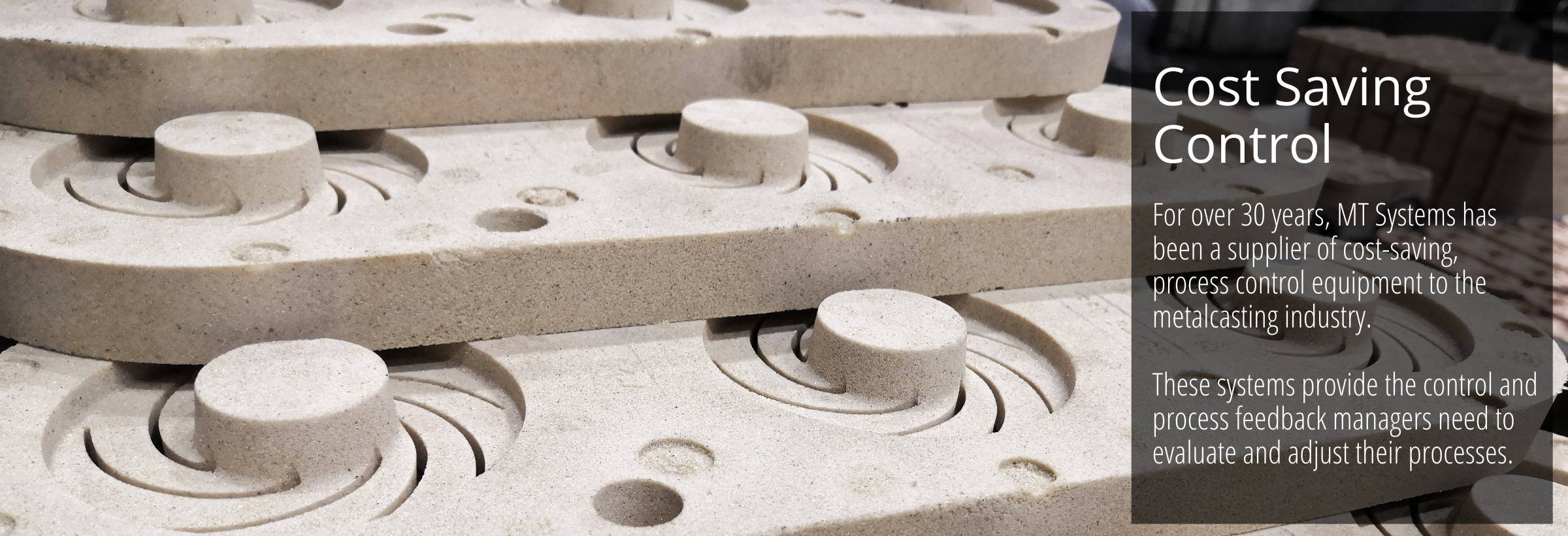


Download PDF of This Case Study
Introduction:
Lufkin Industries has been in the foundry business for over 80 years. They are a medium production and jobbing shop, specializing in large iron castings. Their facility can produce over 300 tons of castings per day. As shown below, they utilize several technologies in all areas of their casting production.
General Foundry Information
Product Line:
Casting Metal Type:
Melting Facilities:
Sand Facilities:
Cleaning Facilities:
Heat Treating:
Project Objective:
The objective and need of the foundry was to get control over their two 1,000 lb/min No-Bake mixers located in their Main Bay. These two mixers produce 75% of their Phenolic No-Bake molding sand and are the key foundry molding operations. An additional goal was to increase the flexibility and product repeatability in that area.
Original Problems:
Solution:
They installed the MT Systems REALTIME computerized Resin Control System during July 1989. The basis of the system was to give them the flexibility to produce molds as individual parts and to insure that these molds are produced the same way every time
To accomplish the above goals, each mixer was outfitted with the following hardware:
Their production flow is as follows:
The mold set up man scans the bar code on the production cards used for daily scheduling. The computer retrieves that part recipe from the database or if the part is not in the database switches to “Teach” mode. When the job is under the mixer the operator initiates the cycle by pressing a start button. If the pattern is being taught, the recipe information is stored in the database. If the recipe is known, the computer starts the mixer and begins adding facing sand onto the pattern. The facing sand is a specific mixture of sand and resin used against the pattern face.
By monitoring the mixer run time, the computer knows when to change to a backing sand mixture. The computer also controls the compaction table to insure a repeatable compaction. When the fill time is reached, the computer turns the mixer off. During the making of the mold, the computer is monitoring sand temperature and controlling the catalyst addition to insure the desired set time.
The system provides management with daily operation and consumption reports. The daily operation report is a log that lists each part/mold produced and what went into each individual job. This report includes the part number, mix time, finished time, sand weight, chemicals SPC data, chemical weight, average sand temperature and ambient conditions. The consumption report documents total sand and chemicals consumed, total mixer run time, total jobs produced and average resin and catalyst percents. This data is categorized by shift and mixer then broken down into a daily, month-to-date and year-to-date format. All data is permanently stored for future recall.
It is critical to note that if the process variables deviate from their set point, the system will alarm and shuts the operation down. The computer provides diagnostics that indicate which variable is shutting the process down.
Results and Benefits:
Monetary Savings (January 1, 1990 to April 1, 1993):
TOTAL SAVINGS
MONTHLY $11,002
ACCUMULATED $429,078
Other:
The project engineer responsible for the project feels very strongly about the system and how it has helped Lufkin Industries. Besides the chemical control achieved by the system he can’t stress enough the importance of the repeatable compaction the system gives them. He also thinks the control over the sand heaters is another important feature. The documentation that the system provides is helping him and the area managers run that area more efficiently. The area foreman was skeptical at first, however, now he’s a major proponent of the system and wants it expanded to other areas. The mixer operators were also skeptical at first, but the system has eliminated the day to day problems and now they can concentrate on production and quality.
Overall the project has had a greater impact than originally thought. To sum up, they are ”very pleased and feel the project was a big success!”
Throughout the three years of service, this installation has been virtually trouble free. We have had very few failures causing scrap molds due to the alarm system. The RealTime management reports also provide the process control and documentation information needed to meet the reporting requirements for Lufkin’s government customers.